Homemade Cultured Buttermilk – 2 Methods
In this post, I am showing you 2 different simple methods of how you can easily make cultured buttermilk at home.
We love cultured dairy and use buttermilk in many recipes.
Sometimes, we end up with a lot of milk from our herd share. The best way to make this leftover milk last longer is by culturing it.
Also, we love to use this buttermilk as a launching pad for other dairy fermentations that I will talk about in future posts! Stay tuned!
This post contains affiliate links, which means I make a small commission at no extra cost to you. You can read my full disclosure.
What is cultured buttermilk?
As the word implies, cultured buttermilk has been produced by letting beneficial bacteria do their job. Just like yogurt, kefir, and sour cream, cultured buttermilk has a slightly tangy flavor.
However, there are other types of buttermilk:
Technically, any time you make butter and separate the butter from the liquid you have buttermilk.
And sometimes, if we want to use buttermilk in a recipe, we can add vinegar or lemon juice to milk and have instant buttermilk.
This is different from what we are doing here!
Cultured Buttermilk – method 1
This method produces the most amount of buttermilk. All you need is some already-made cultured buttermilk.
You can buy it from the store.
You can buy specific cultures from this source.
Or you keep some of the buttermilk from a previous batch.
Now, all you do is add about ¼ cup of cultured buttermilk to your milk. We love to use raw milk but pasteurized works just as well.
Then you cover it loosely and let it sit in a warm place for anywhere from 8 – 24 hours. You might want to check on your buttermilk frequently to keep it from over-fermenting. Signs of over-fermentation are whey separating from the buttermilk and a very sour smell or taste.
Once you’re done, you can enjoy this buttermilk right away or keep it in the refrigerator for future use!
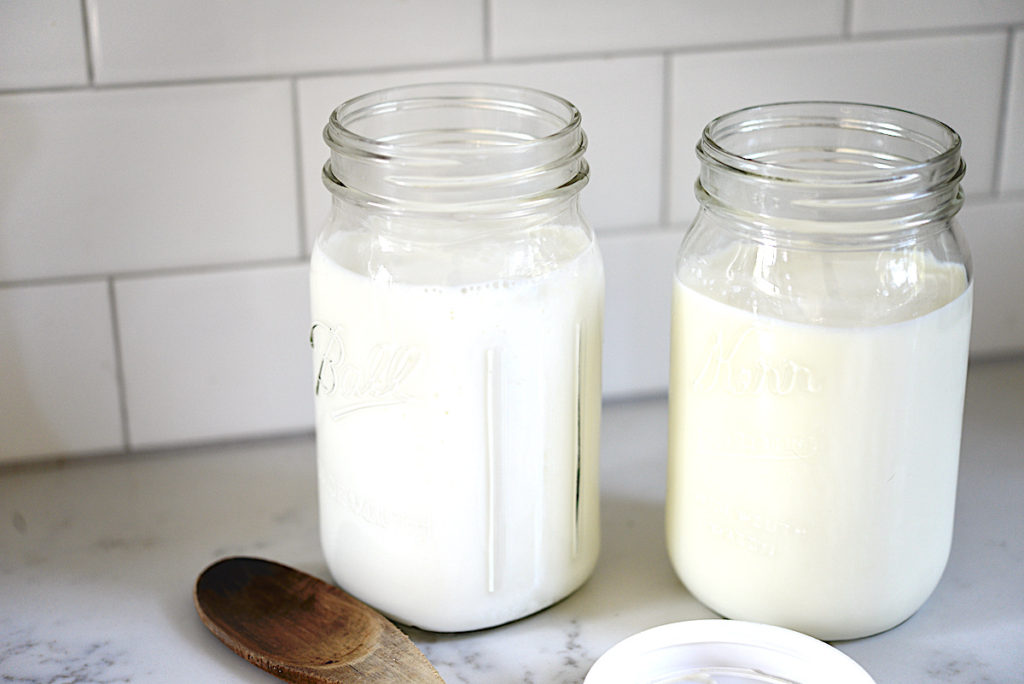
Cultured buttermilk – method 2
For this method, you will need to make butter.
I have a tutorial here and here, showing you how to make butter at home. We do it all the time. It is so easy and fun to do!
The only difference is that you will need to culture your cream before making the butter.
Simply add about 2 tablespoons of kefir (or yogurt) to the cream, cover it loosely, and let it sit in a warm place for anywhere from 8 – 24 hours. Just like with method 1, you might want to check this periodically.
You want the cream to turn into sour cream. It should then look a lot stiffer and firmer than the cream.
Now, you make butter. You can hand-churn it, use your kitchen processor, or your high-speed blender.
Then you will end up with delicious butter – and buttermilk!
Just strain the butter and collect the buttermilk in a mason jar or container. If you want this buttermilk to have a very smooth consistency, use a finer strainer. Using a coarser strainer results in leaving little specks of butter in your buttermilk.
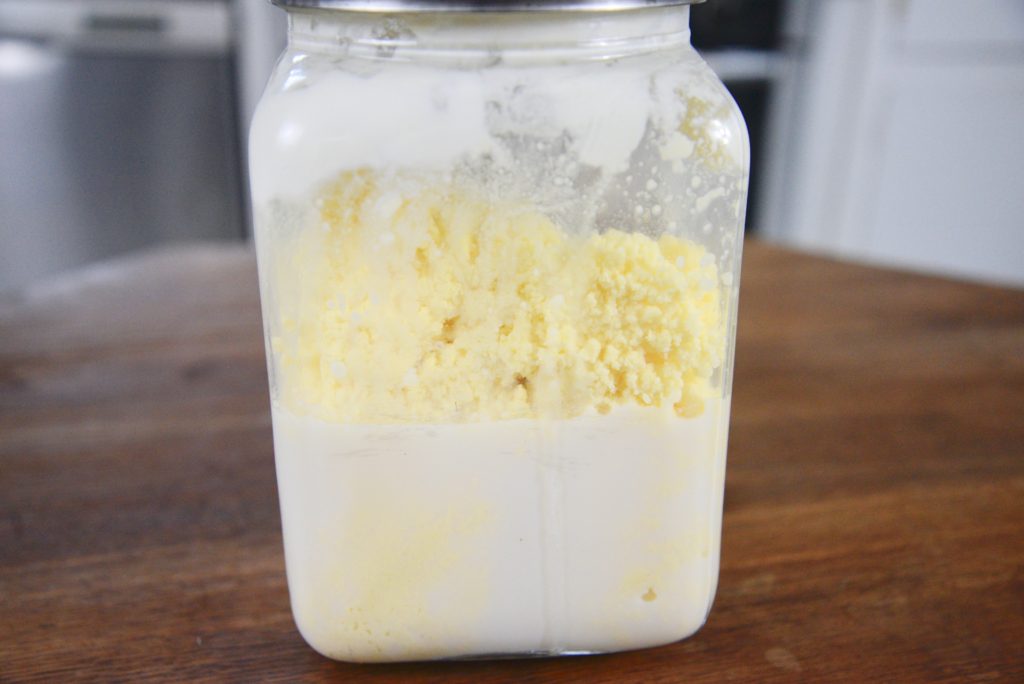
10+ Uses for your cultured buttermilk:
- I actually enjoy drinking buttermilk straight from the glass!
- However, most people use it in recipes.
- I love using buttermilk to make a sourdough starter.
- The most popular use is probably replacing regular milk with buttermilk in your pancakes or waffles.
- Of course, you can use it in any cake recipe when you’d normally use milk.
- Marinating meat in buttermilk is a great idea as it makes it very tender.
- Buttermilk is also perfect for fried chicken! You can make ranch dressing with it or add it to your smoothies.
- And if you are familiar with it, you might like to turn your buttermilk into quark.
- You can use it on your skin, especially after sun exposure and sunburn.
- Buttermilk is great for your hair!
- I bet that once you experience how easy it is to make cultured buttermilk, you will come up with a lot more ways to use it in your kitchen.
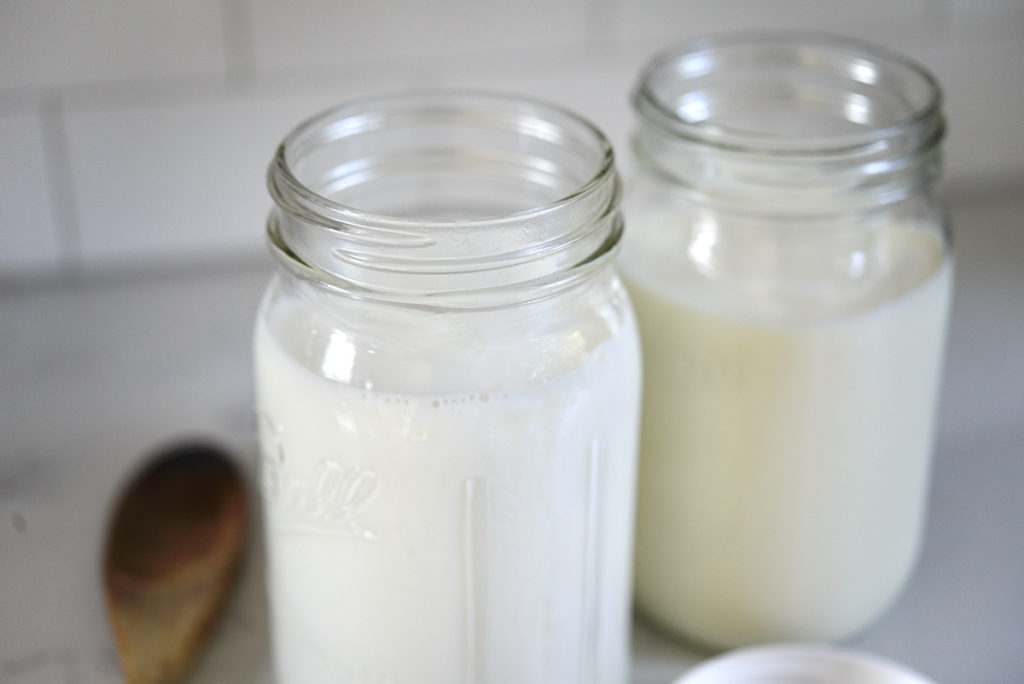
Notes:
Just like with any fermentation, the temperature will have a big impact on your buttermilk-making process.
When I make buttermilk in the winter, it can take about 24 hours before it has been properly cultured. In the summer, this might happen overnight.
That is why it’s a good idea to check on your ferments periodically. Also, some people want just a bit of tanginess, and others like their cultured dairy to have a deeper, more sour taste. Just be careful to not over-ferment your buttermilk!
If you have ever spent any time in the European Alps, you might have seen cultured buttermilk being sold in those mountain inns.
For me, this refreshing drink with the little specks of butter brings back a lot of childhood memories!
Have you made cultured buttermilk before? What is your favorite use for it? Let me know below!
Pin For Later:
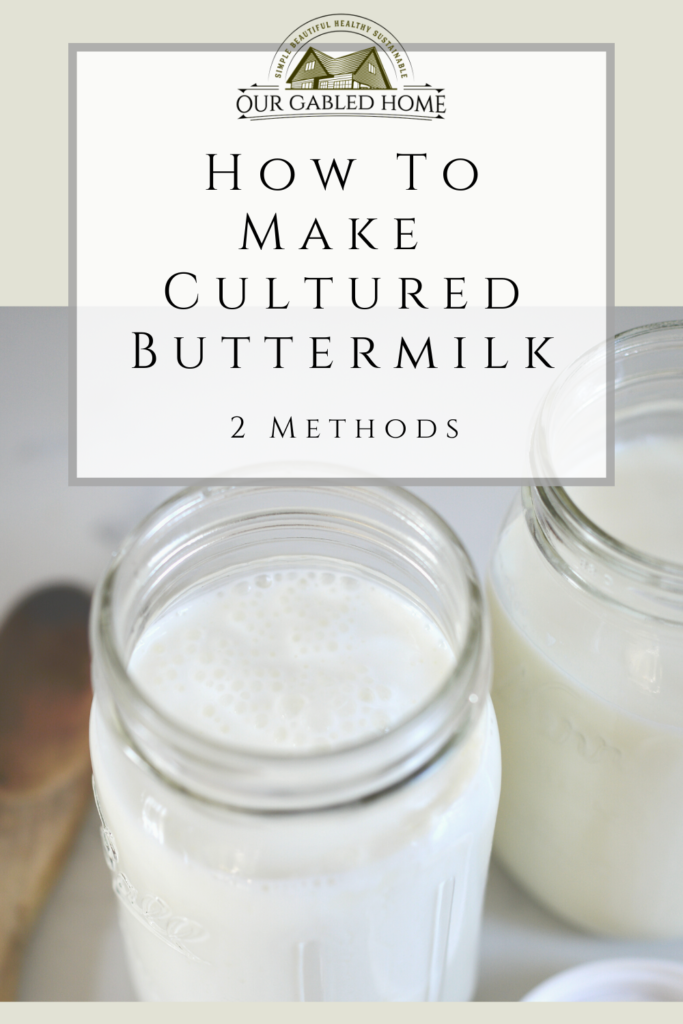
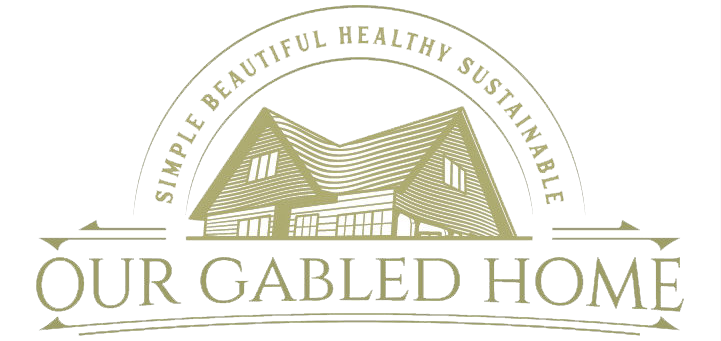

Hello Anja, You might be tired of answering questions about buttermilk and, if so, I apologize in advance. I buy Creamline whole milk, pasteurized but not homogenized. Unlike ultra-pasteurized milk it doesn’t last very long before beginning to sour. I don’t use a lot of milk so tend to have to pour it out often. I hate waste, so I decided to try your Method I buttermilk recipe. I had about 3/4 of a half gallon glass jug of milk that was just starting to smell a bit sour, and I added 1/4 cup of cultured buttermilk to it. I covered the spout with cheesecloth and put it on the counter for about 16 hours. It looked thick, but it tasted too sweet (for my liking,) so I decided to leave it a bit longer and about an hour or so later it separated and curdled. Can you tell me what may have gone wrong? Why did it not taste sour? Thank you. Robin
I don’t necessarily think your buttermilk was bad, sometimes it separates, and you only need to give it a good shake. Buttermilk is very mild and does not have a very sour taste like yogurt or kefir. Hope this helps ~ Anja
Thank you. But it looks more like cottage cheese now 🙁 definitely not appetizing. How long should a good (correctly) cultured buttermilk last in the refrigerator?
Maybe your quark started curdling which can happen if you let it sit too long. It should easily last 7 days in the fridge but we have had it last longer than that ~ Anja
I was [trying] to make buttermilk, not quark. I have googled what to do with this curdled milk, but cannot find any answers, for instance do I use it like cottage cheese? I will leave it here after asking this last question, I don’t mean to be a pest.
I just tried, again, to make the Method I buttermilk. And again, it separated into curds and whey, my home temperature is set at 70 degrees Farenheight.
Am I supposed to use low-fat milk, or heat the milk before adding the cultured buttermilk to sit on the counter? Or has it become quark??? I would like to add an image, but unfortunately there does not appear to be anyway to do this. It might give you a better idea as to the issue(s) I’m having. Thanks for your time. Robin
Not sure what could be going on. You may have quark the way it’s supposed to. Otherwise, it could be your milk or your cultures. You can always add it to baked goods for an extra tangy flavor and moist crumb ~ Anja
I am wondering if you could make buttermilk using almond milk and buttermilk?
Good question but I am not sure. However, you can always give it a try and see what happens ~ Anja
How do you overferment the buttermilk?
By leaving it out too long (the cultures will have used up all the available lactose in the milk) ~ Anja
Hi Anja! Thank you very much for all the wonderful videos 🙂 I’m really keen to try making cultured buttermilk but the link to the cultures takes me straight to some random items on Amazon. Is it possible to have an updated link to the specific culture you’d recommend? Xx
This should work: https://amzn.to/3CNmbSk ~ Anja
Thank you for your super quick response 🙂 it came up with a bunch of random products again but I think I’ve figured out why … I’m in the uk and there’s not many culture sellers … that might explain why your link seemingly disappears on me! I’ve found cultures by a brand called Freshly Fermented so will give them a try 🙂 xx
That’s probably why. I am glad you were able to find some cultures in the UK!
Thank you for your wonderful easy to follow recipes and videos. They are quite inspiring. One question I have, in the version with the store bought buttermilk or yoghurt, what kind of milk do you use to add these cultures into? Can you use pasteurized whole milk or does it have to be raw milk? Also when using yoghurt as the culture, should it be plain full fat? Can you make butter from this buttermilk as well? Sorry for all the questions but I don’t want to screw it all up and waste the ingredients. Look forward to your reply. 😊
I am so glad you like this buttermilk post! You can use pasteurized milk but NOT ultra-pasteurized. You can use any plain yogurt (non-fat, low fat or whole). You cannot make butter from this buttermilk, actually, it’s the other way around: https://ourgabledhome.com/how-to-make-cultured-butter-quick-easy/ Hope this helps ~ Anja
I am new to using fresh milk as our cow just gave birth for the first time recently so I’m learning new ways to use it! I have a lot of “old-fashioned” buttermilk from making butter but I’ve been wanting to make cultured buttermilk for certain recipes. I will give this a try, thank you!
How perfect, I am sure you’ll love all the ways to use the milk from your own cow!
I never thought to make buttermilk before. I will need to give it a try! My granny loved buttermilk. I make a very simple Irish soda bread with buttermilk.